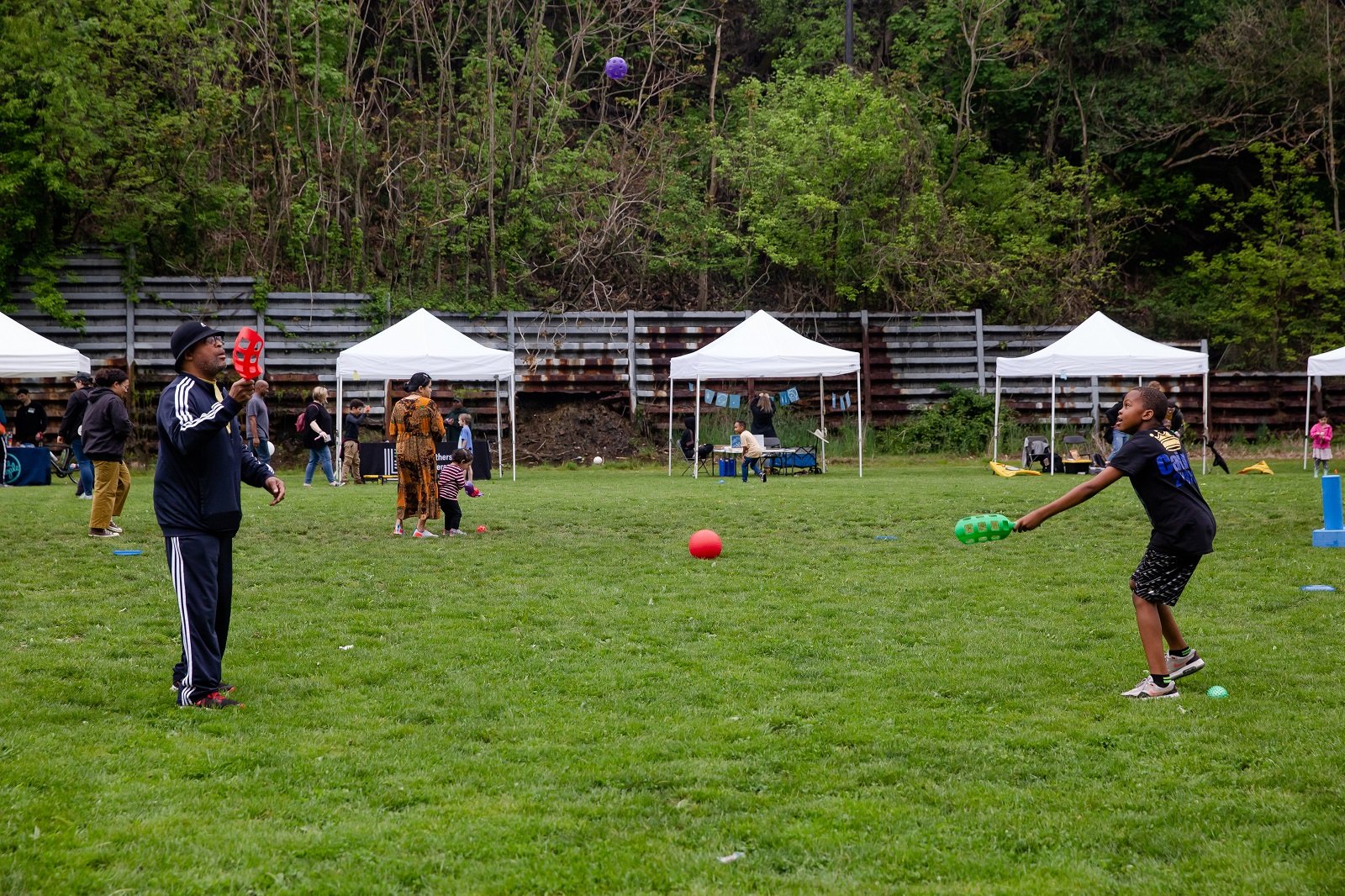
NEWS
The Story Behind Intergenerational Play
Through intergenerational play, adults and children can further their social bonds, develop lifelong skills like language cognition and problem-solving together, and discover more of the world around them.
The term intergenerational is often defined as a purposeful, regular exchange and learning between children and older people. This intergenerational sharing can bridge generational differences and provide mutual benefits, as well as counteract ageism and age-related stereotypes.
Photo Credit: Crystal Joy Photography
Why Intergenerational Play and Recreation is Important
As Irish playwright George Bernard Shaw famously said, “We don’t stop playing because we grow older; we grow older because we stop playing.” Play is not only beneficial but essential for people of all ages. Today, there is increasing interest in the benefits of not only play itself, but specifically people from younger and older generations playing together.
Research shows that play is essentially good for older adults: it promotes relaxation, reduces stress, and helps to maintain cognitive skills, such as memory and problem-solving. Active play for older adults helps to increase muscle tone, coordination, and reaction time. Adults who exercise regularly can significantly reduce the risk of developing dementia and Alzheimer’s disease. Intergenerational play is also the ideal setting for the family to bond with each other.
Older adults and children can engage together in numerous types of play, and no specific type of play is more beneficial than another. For example, ‘make-believe’ is one form of play where adults can, if they choose, effortlessly influence the development of a child’s social and moral values, through encouraging co-operation, honesty, and good sportsmanship. Generations can learn more about language development by playing with each other as it can help to improve social and communication skills.
Activities that are generally associated with intergenerational play can include puzzles, construction or building sets like stackable bricks and blocks, drawing, board games, arts and crafts, and story-telling. These activities help socially to develop bonds between adult and child, but also encourage imagination and sense of achievement.
Conclusion
Children can gain a lot when older adults take an active role in play. Children who play with older adults demonstrate more creativity and higher levels of language and problem-solving skills. For older adults, play has many psychological and health benefits, particularly when children are involved.
Through intergenerational play, older adults and children can further their social bonds, develop lifelong skills like language cognition and problem-solving together, and discover more of the world around them.
Photo Credit: Crystal Joy Photography
Using Play to Support Children’s Physical Health
As children’s first teachers, parents and caregivers play a vital role in supporting their children’s healthy development.
As children’s first teachers, parents and caregivers play a vital role in supporting their children’s healthy development. While it may sound like a big task, the first step is simple: incorporate developmentally appropriate activities into your daily routines!
Using Play to Support Children’s Physical Health
According to the DAP series created by Trying Together, children’s early experiences play a critical role in their physical development. To best support growth, children need:
Access to fresh, healthy foods to receive the proper nutrition they need to grow;
At least one to two hours of moderate to vigorous physical activity or active play daily, depending on age;
Caring and supporting relationships with others in environments that don’t impose high stress and;
Regular health screenings and wellness exams to monitor healthy growth and development.
Play promotes healthy physical development by enhancing gross motor skills, like running, jumping, and climbing, which proves crucial for coordination, balance, and strength. Additionally, engaging in physical activities at a young age creates a strong foundation for maintaining an active lifestyle throughout life, leading to better physical fitness in the long run.
Engaging in physical play is beneficial for cognitive development in children. It stimulates their brains, promotes the growth of neural connections, and enhances cognitive abilities. Active play also helps develop problem-solving skills, spatial awareness, and executive functions, such as planning, decision-making, and self-control.
Engaging in physical play is essential for a child's physical, cognitive, and social-emotional development. It allows children to learn vital skills such as interacting with peers, cooperating, taking turns, and negotiating. These skills, in turn, help foster social skills and empathy.
Educators and caregivers can support the overall development of children by incorporating physical play into their practices. The infusion of both of these things helps children thrive physically, cognitively, and socially. Regular opportunities for active play are essential, and it's crucial to prioritize this aspect to ensure children can access the benefits of an active lifestyle from a young age.
This resource is available as a printable PDF (English) (Español).
To learn more about DAP and play, visit Trying Together’s Developmentally Appropriate Practices webpage.
Photo Credit: Crystal Joy Photography





